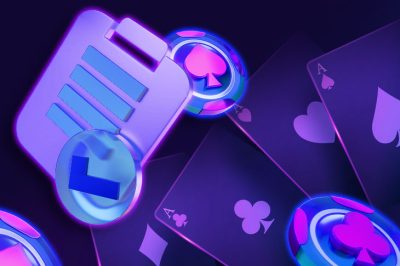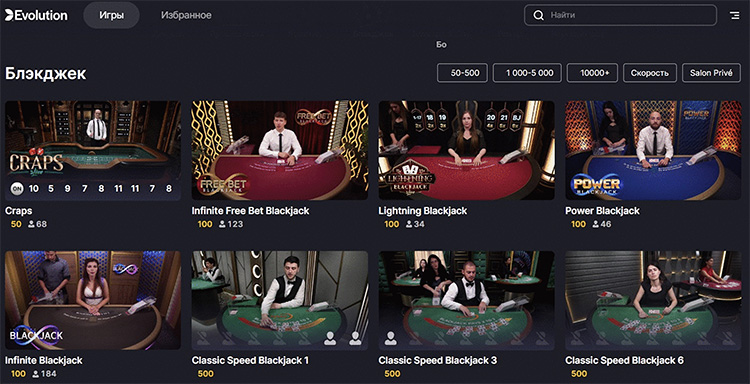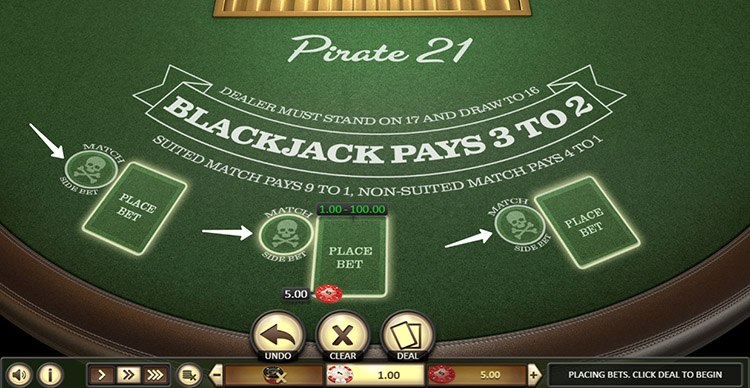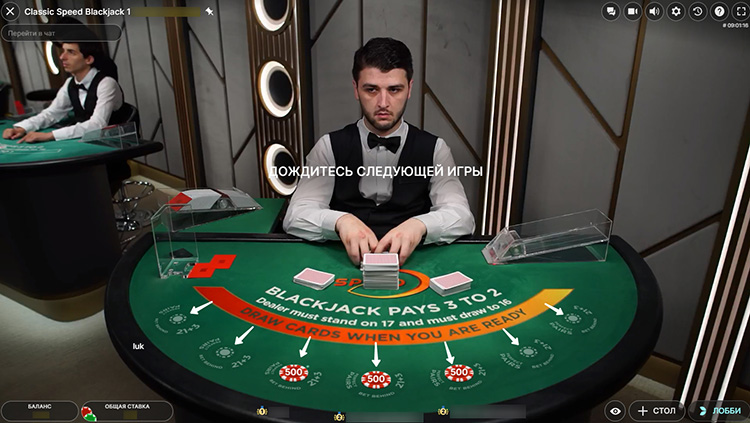
Blackjack is a popular card game of chance with one of the lowest casino benefits. By using basic strategy, it can be reduced to about 0.5%. Despite the simple rules, this game is deep strategically. The decisions made by the user really affect the outcome and allow you to increase the effectiveness of your bets. This page provides detailed blackjack rules for beginners, a description of some strategies and useful recommendations.
- A brief history of blackjack
- Basic terms
- Basic blackjack rules
- Additional rules of the game
- Blackjack game play
- Rules for scoring and determining the winner
- Blackjack variations
- Strategies
- Which casino to play blackjack at
- Tips for beginners
- Blackjack etiquette
- Frequently Asked Questions
A Brief History of Blackjack
The exact origin of the game of blackjack is unknown. In this regard, historians disagree, and there are several generally accepted versions of different content. The birthplace of entertainment with a high degree of certainty can be called Italy. Here back in 1440 found mention of the game Trentuno, which in Russian means “Thirty-One”. It almost completely repeats the rules of blackjack, the only difference is the requirement to win. As is clear from the name, to win you must aim to score 31 points instead of 21.
Blackjack in its modern form appeared in the United States in the 1930s. It is believed that the game came to America with the French settlers
Blackjack in its modern form appeared in the U.S. in the 1930s. It is believed that the game came to America with the French settlers.
Blackjack began to gain popularity in the 50s of the last century. At that time, a collective of mathematicians and professional players known as the Baldwin Group operated in Nevada. On their behalf, an article was published in the Journal of the American Statistical Association. In it, they presented a set of mathematically sound bets in various cases, called basic strategy.
And in the early 1960’sEdward Thorpe described his vision of blackjack in the book “Beat the Dealer”. It was designed for a wide audience and explained the strategies of card counting in simple language. The paperback edition was a longtime bestseller in U.S. bookstores.
The rules of blackjack were no longer something unfathomable. The discipline appeared in all land-based establishments in America and managed to squeeze out such “titans” as poker, roulette and craps. Now it is also represented in the vast majority of online casinos.
Basic terms
Blackjack has its own terminology. It should be studied before you sit down at the table. The terms will not tell you how to play blackjack, but they will prevent misunderstandings when using the interface and communicating with the dealer and other users. Basic terms:
- Player-a visitor who confronts the dealer. He makes bets.
- Dealer – a casino employee responsible for dealing cards, scoring and paying out prizes. He explains the rules, answers questions. Also deals cards.
- Hand – a set of cards received by the party from the dealer. This is the starting layout. Cards for blackjack have a face value from a deuce to an ace. The player can get the first two cards after placing a bet.
- Shuffle- A complete game sequence. It starts with shuffling the deck and ends with the release of a single cut card.
- Shuz – a special container in which the decks are placed and from where the sheets are taken out to distribute cards to players. It is changed regularly. Only from here the dealer can deal cards to the participants.
- Cut card – a piece of plastic in the middle of the shuz, the output of which means the need to change decks. Betting stops for a while after that. The dealer continues to deal cards after receiving a new shuzu.
- Box – a place at the table, which becomes a player. Cards are dealt to the box. Here the bets are placed.
There are also terms for specific actions of a player at the table. Their list and description are presented in the additional rules section.
Basic blackjack rules of the game
The goal of a blackjack player is to beat the dealer. This can be accomplished in two ways. The first is to score more points than the dealer. The second is to wait for a situation in which the dealer will be overdrawn – the score exceeds 21 points. At the same time you need to keep an eye on your own score. A score of 22 points or more will mean an automatic loss, regardless of the dealer’s result.
Ratio of cards and points
Cards in blackjack give a certain number of points. Their face value is the same in all variations of the rules. The total number of cards in the deck is 52.
| Denomination | Number of points |
|---|---|
| Ace | 1 or 11 |
| Pictures | 10 |
| From twos to tens | By denomination |
The Ace counts as a 1 if the other cards give a point total of more than 10. In other cases it is given a face value of 11. For example, if a participant has 9 points, the Ace counts as 11 points. Online scoring is done automatically, offline by the participants.
In the Ochko game popular in Soviet times, the jack, queen and king are given 2, 3 and 4 points respectively. This is due to the use of a shortened deck without twos, threes, fours and fives. The ace is always 11 points
In the Ochko game popular in Soviet times, the jack, queen and king give 2, 3 and 4 points respectively. This is due to the use of a shortened deck without twos, threes, fours and fives. An ace is always 11 points.
There is no joker. He is not an ace and does not change other denominations. He is not dealt by the croupier. In all types of blackjack games, the classic deck from deuce to ace is used.
Stakes in the game
Before the distribution of starting hands, the player makes a bet. Its size is determined by the limits of the table. There are minimum and maximum values. Chips are placed in the center of the box, after which the players start the game. They get the first two cards. Then they can get more. The dealer takes one card for himself.

Players are not offered to choose different outcomes. They put a certain number of chips on the line and either lose them or receive a payout. A normal win is considered 1 to 1, blackjack is 3 to 2. A draw is also possible, when the sums of the player’s and dealer’s points are equal. In this case there is a return of bets.
Basic actions are two – take another card or stop. Thus the participants of the deal gain points.
Side bets
Some providers, in addition to the basic ones, allow you to place side bets on the left and right sectors of the box. They should be studied before playing blackjack. They are made in addition to the main and do not depend on the overall outcome of the game. The user receives a payout on them if the starting hand and the dealer’s open card give the desired result.

The size of winnings on them is quite large. The payout can range from 5 to 1 to 100 to 1 or more. What are the side bets:
- Pair.The player gets two identical cards in the starting hand.
- Three.The user has a pair, plus the same first card is opened from the dealer.
- Street.The player’s hand and the dealer’s open card give an ascending combination. For example, 5, 6 and 7. The suits of the cards do not matter.
- Flush. Player and dealer have one-suit cards.
- High-low.The sum of the player’s two cards gives a score greater or less than 13.
There are other variants of outcomes. For example, three sevens, three aces, etc.
Although side bets have increased payout odds, it is better to refuse to place them. The advantage of the casino on them is greater than the base.
Additional rules of the game
At the beginning of the hand, additional actions are available to users at the beginning of the hand under certain layouts:
- Split.Split the starting cards of the same denomination into two hands and add one bet.
- Double (Double).Double the bet. After that the player gets only one more additional card in his hand and can’t take any more.
- Insurance.This can be done if the dealer has an open Ace. In the case of blackjack at the dealer, this additional bet will be paid at odds of 2 to 1. The dealer must have a ten after the Ace to receive insurance.
- Surrender (Surrender).Exit from the hand with the return of half of the bet. In this way, you should try to end the game if two of the user’s cards are 12-16 and one of the dealer’s cards is 7 or more.
- Triple (Triple).Add another bet after a double and get a new card. This option is available on a very small number of tables.
A player can make any of these decisions on the first turn. They do not change the rules of blackjack. The conditions of victory for each hand remain the same – to score more points than the dealer, or overcall the dealer.
How to play blackjack
At the beginning of the hand, users place bets. In electronic slot machines there is only one box available, in live mode – several. The dealer deals himself and the participants two cards. Players get them in their hands in the open, the dealer has one closed.
Then each participant makes a move. There is no queue. The dealer deals the cards when the players are ready. When everyone makes the desired action, the dealer takes it. The dealer always gets the second card. He cannot stop at any moment. He must take more until the dealer’s cards bring him at least 17 points. For example, if the player has 13 and the dealer has 16, the dealer cannot declare victory.



Rules for scoring and determining the winner
The winners are determined after the dealer’s turn is over. Participants with more than twenty-one points lose their bets. For the rest, the outcome depends on the dealer’s hand.
Participants who score more points than the dealer receive a 1-to-1 payout. Blackjack (21 points from two starting cards) brings a payout of 3 to 2. In case of a draw, there is a refund of bets.
Blackjack is the strongest combination in the game. It wins against twenty-one drawn from three cards
Blackjack is the strongest combination in the game. It wins against twenty-one drawn from three cards.
If the dealer is overcalled, it is an automatic win for all participants. The exception is players who score more than 21 points before the dealer passes the turn to the dealer.
The suit of cards does not matter. They are equal in strength. If the dealer’s open card, for example, is a club and the player’s is a diamond, this difference is not taken into account.
Blackjack variations
Most blackjack tables use the classic blackjack rules, with the dealer having to deal the dealer’s cards when the score is 2-16. However, in some variations, the dealer must continue on 17. Such tables are rare because of the reduced casino advantage.
Blackjack is also divided into American and European. The first is more common. Here the dealer immediately deals himself two cards, one leaving open. In the European version, he deals himself a second card when all participants make a move.
Differences between electronic blackjack and live blackjack
The rules in electronic machines and live broadcasts do not differ. The gameplay for the user is the same. The course of distribution proceeds similarly. First, all players’ bets are placed, then cards are dealt and moves are made. At the end, the scores are calculated and the results are announced.
However, there are some differences. In slot machines, the results are determined by a random number generator, while in live games the results are determined by luck. In electronic blackjack the user does not see other participants, in live broadcasts – vice versa. You can even chat with them.

Game Strategies
The basic strategy (BS) is considered fundamental. It was developed back in the 1950s and helped popularize blackjack. Later, other strategies emerged, although most have no mathematical basis.
Basic
It is based on mathematical principles and probability theory. To use the BS, it is enough to count the number of points in the hand and on the dealer’s open card. Then these values are substituted into a table – a ready chart. Here are the optimal solutions for each case.
The basic strategy reduces the advantage of the casino, but its application is possible when using a small number of decks – 1-3. If there are more cards in the shouse, the effectiveness of the system drops
The basic strategy reduces the casino’s advantage, but its application is possible when using a small number of decks – 1-3. If there are more cards in the shuzu, the efficiency of the system decreases.
Other strategies
In the 1960s, Edward Thorpe proposed a card counting system. According to it, the output of tens and pictures gives -1, sevens, eights and nines – 0, aces and other denominations – +1. The higher the score, the more chances to score the right points and get a win. In its time, this system made blackjack popular, it even formed the basis of many movies. However, it is effective when the dealer uses up to 2 decks. Now there are at least six decks in the shuz.
Strategies such as Martingale, Parlay and Labouchette are not applicable to this card game. They are designed for bets with a 50% chance of a positive outcome. Blackjack has no such odds. The probabilities are influenced by many factors: the number of decks in the shooze, the number of participants, the actions of different players.
If you want to use strategies, it is better to stick to the basic system and modify it for a particular table and your playing style.
In which casino to play blackjack
Blackjack can be played in almost any online casino and land-based institution. There are usually dozens of tables available. This card game is one of the top five most popular along with poker, roulette, baccarat and craps. If in the catalog of the playground it is absent, it is an alarming signal: it is better not to register on such a site.
On the rules and benefits of the game, the choice of casino does not affect. They are determined by the provider. However, this does not reduce the importance of evaluating the gambling operator. Before registering, you need to check the license, evaluate the catalog of games, look at the available payment systems, study the bonus program.
Tips for beginner players
Strategies do not guarantee victory. Mathematically correct decisions will not always ensure it either. Blackjack rules make luck a determining factor in the outcome of hands. However, unlike slots, in which everything depends on a random number generator, in this card discipline, the player can if not tilt the odds to his side, then at least reduce the advantage of the casino.
Tracking the cards in the deck
Knowing which cards came out of the deck, you can roughly estimate the probability of getting a certain denomination. This will keep you from making bad decisions. For example, if 14 Aces have already come out of 6 decks in the shuzu, then there are only 10 Aces left, and the chances of getting that one card to the starting hand are slim. The exit from the shuz of denominations from 3 to 9 increases the probability of the coveted 10 points or ace. Counting is not difficult – the dealer’s card is placed openly on the table. It can be seen on the croupier’s box. Players also receive their cards open. All opponents can see them. And it is not only the first two cards.
Splits and Doubles
These actions are potentially the most profitable for the player. However, they should be done only in certain circumstances. It is recommended to split any pairs except tens and fives. Double should be made with starting 10 and 11, if the dealer’s first card is not a ten or ace.
Insurance Waiver
Insurance is disadvantageous at any odds. It gives protection against the dealer’s blackjack, but all other outcomes will result in the loss of the bet. It is better to refuse this action even if the dealer’s card shows an Ace in the open.
Budget Management
Money from the deposit should be divided into equal bets and avoid raises. Increasing the number of chips is only allowed when dabbing. In other cases, this will put the bankroll at even greater risk. The balance should be sufficient for at least 30 bets.
Selecting the number of boxes
For beginners, it is recommended to play only one box at a table. Playing several hands at once is more difficult because of the shorter decision-making time. You should first gain confidence when playing on one box.
Blackjack etiquette
The rules of blackjack in land-based establishments also determine the etiquette. The player must communicate politely with the croupier and other participants of the deal, do not touch the chips outside his box.
The meaning of gestures
Gestures at the table help to inform the dealer about his decision without using words. Each action has its own hand movement:
- Enough – put the corner of the cards under the chips and do not touch them until the end of the deal.
- More- to move your fingers across the table surface behind the placed chips.
- Double – fold your hand into a fist and extend forward the index finger.
- Split – put next to the initial bet additional and show the dealer two raised fingers. The first cards will be split into separate boxes.
In online casinos, knowledge of gestures is not useful. Different moves are made by clicking on the corresponding button in the interface. Players see their cards and all controls digitally right on the screen.
Tip for the croupier
Tipping the dealer is only possible in land-based establishments. In online casinos, this option is not available. Their size and time of transfer is not regulated. Tips can not be given only during the distribution of cards. Before and after – you can.
Generally accepted is the amount of 5-10% of the winnings. The dealer can not refuse to tip. He must accept it and thank the player.
Frequently asked questions
In most cases, no. Online casinos do not take into account the entire turnover of table game bets when fulfilling the wager requirements. This measure is taken to combat bonus-hunters.
Soft is a combination with an ace when it gives 1 or 11. That is, it is safe to draw another card. With a hard hand when continuing the game there is a risk of scoring more than 21 points.
The version with bets on conditional chips is in electronic slot machines. In live demo mode is not. The dealer deals two cards to the participant and takes one card for himself after betting.
The rules of gaming sites do not prohibit this. For this can be penalized only in land-based establishments.
When using one deck, it is 0.25%. However, there are usually no less than 6 in the shuzu. In this case, the advantage increases to about 2%.
Players receive their cards from the dealer. This role is determined in advance by drawing lots. It is then passed clockwise.
Players see their cards from the beginning. The hands of the other participants are also known in advance. The dealer always has only one open card. He takes it to himself in the last turn. He shows the second card when all players have made a move.
Their number is not limited. There is no rule that, for example, in the case of a set of 4 or more cards, a player cannot take more cards.



